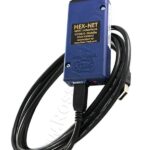A VW Jetta TDI with over 270,000 miles recently underwent a VCDS scan revealing multiple fault codes across various modules. This article analyzes these codes and provides guidance on addressing them, specifically focusing on how to retrieve the RNS 315 radio code using VCDS.
Understanding the VCDS Scan Results
The VCDS scan indicates malfunctions in several modules, including the engine, automatic transmission, HVAC, central electronics, and telematics. Key error codes include:
- Engine (Address 01): Faults related to fan control (P2D89), cylinder 1 combustion (P039E), oxygen sensor (P2237), internal pressure sensor (P13D0), particulate filter regeneration (P2459), mass airflow sensor (P00BD), and exhaust flap sensor (P048C).
- Automatic Transmission (Address 02): A fault related to pressure control valve 3 (P1824).
- HVAC (Address 08): Function restriction due to faults in other modules (U1113) and a fault in the heated seat (B1398).
- Central Electronics (Address 09): A fault in the horn control circuit (03591).
- Telematics (Address 75): A control module fault indicating start prohibition deactivated (B1788).
While the scan shows “No fault code found” for the Navigation module (Address 37), which houses the RNS 315 unit, it’s crucial to understand that the RNS 315 often requires a separate procedure to retrieve its code using VCDS. This is where the focus of this article lies.
RNS 315 Code Retrieval with VCDS (Address 37)
Although the navigation module doesn’t display an error code, retrieving the RNS 315 code is essential if the unit has been disconnected from power or if a component replacement requires a code reset. Here’s a general outline:
- Connect VCDS: Ensure your VCDS interface is properly connected to your vehicle’s OBD-II port and your laptop.
- Select Navigation Module: In VCDS, navigate to “Select Control Module” and choose “37 – Navigation.”
- Access Security Access: Within the Navigation module, look for “Security Access – 16.” This function allows access to protected features.
- Enter Access Code: You’ll likely need a specific access code to unlock the radio code retrieval function. This code may vary depending on the RNS 315 model and region. Online resources and forums dedicated to VW/Audi vehicles can often provide this information.
- Retrieve Radio Code: Once Security Access is granted, navigate to “Adaptation – 10.” Within Adaptation, search for channels related to “Radio Code” or “Safe Code.” The exact channel name might vary slightly.
- Record the Code: The RNS 315 code should be displayed in the adaptation channel value. Record this code carefully. This is the code you’ll need to enter into the RNS 315 unit to unlock it.
Addressing Other Fault Codes
While retrieving the RNS 315 code is a priority, the other fault codes should be addressed systematically. Start with the most critical codes, such as those related to engine performance and safety systems.
- Prioritize Engine Codes: The cylinder 1 combustion malfunction (P039E) and particulate filter regeneration frequency (P2459) require immediate attention as they can significantly impact engine performance and emissions.
- Investigate Sensor Issues: Address the oxygen sensor (P2237), internal pressure sensor (P13D0), and mass airflow sensor (P00BD) faults. Faulty sensors can disrupt engine operation and fuel efficiency.
- Address Other System Malfunctions: Investigate the fan control (P2D89), exhaust flap sensor (P048C), transmission pressure control valve (P1824), HVAC function restriction (U1113), and horn control circuit (03591) issues.
Conclusion
Retrieving the RNS 315 radio code using VCDS involves accessing the Navigation module’s Security Access and Adaptation functions. While the specific steps and access codes may vary, online resources can provide detailed guidance. Remember to address other critical fault codes revealed in the VCDS scan to ensure the vehicle’s optimal performance and safety.

